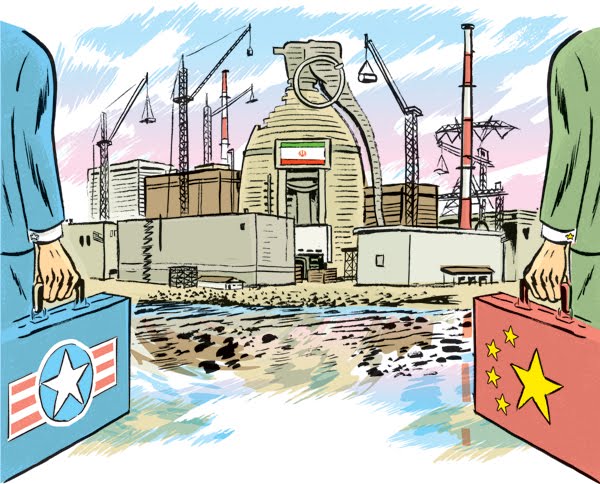
New DF-31A ICBM Brigade in Hunan?
September 9, 2011
Asia’s Electric Grid: The Future of Nuclear Power in the Region’s Energy Mix
October 31, 2011China’s actions have not been in tune with its foreign policy “doctrine of non-interference.†This is a good thing.
On stage, Chinese diplomats continue to promulgate the country’s oft-stated policy of non-interference in the internal affairs of other nations. Yet the evolution of the PRC’s reaction to the on-going crisis in Libya and Sudan’s referendum suggest that it is not iron-clad and other calculations may be pulling at the seams of this so-called doctrine. Iran provides an interesting case-study as there are indications that a similar shift in Chinese posturing may be in the offing.
While Chinese leaders consistently hoist Tehran up as a “fraternal partner†and resist U.N. sanctions to halt Iran’s nuclear ambitions, Beijing’s recent actions do not match up with its diplomats’ congenial rhetoric. Recent reports reveal that Chinese SOEs have put the brakes on oil and gas investment in Iran. CNPC, China’s largest state oil and gas group has delayed drilling exploration wells on the South Pars natural gas field, the country’s most significant energy development project. Sinopec Group, China’s second largest oil and gas firm, delayed the start date of the $2 billion Yadavaran oil development project and CNOOC (China National Offshore Oil Corporation) pulled its team from the North Pars gas venture.
A permanent shift to a “go slow†approach would be significant because Chinese divestment could undermine the Iranian economy and hence challenge the current Iranian leadership under Mahmoud Ahmadinejad, whose administration has been under severe pressure externally as well as internally by the popular “Green Movement.†Iran lacks the infrastructure to refine oil and to efficiently extract natural gas and therefore relies heavily on foreign investment and technological expertise. China has traditionally responded to this deficiency; in 2009, China invested $29.71 billion in Iran’s energy sector, a colossal amount relative to Japan, South Korea, and Malaysia’s $250 million aggregate investments. In 2010, Iran was also the fourth largest recipient of Chinese non-bond investment.
Yet, recent international and U.S. sanctions have halted foreign investment in Iran and contributed to a 9.5 percent decline in Iran’s annual oil production levels. A U.S. National Academy of Sciences study estimates that Iranian oil exports could drop to zero by 2015. With South Korea and Japan having abandoned Iran, China could be the last straw for Iran’s strategic oil sector.
Only time will tell if China’s recent investment slowdown in Iran’s oil sector is of a permanent nature or just a tactical diversion. Therefore, it is more important to examine the drivers behind Chinese actions: Is Beijing responding to U.S. carrots and sticks or voluntarily scaling back from Iran to improve its international image? An understanding of what strategies are effective in shifting China’s Iran policy will better facilitate the United States’ policy goals vis-a-vis China. While uncertainty over China’s intentions in Iran warrants caution, perhaps most disconcerting is the duplicity between Beijing’s rhetoric and actions. While such discrepancies in the cases of Iran, Sudan, and Libya are favorable positions for the United States, China’s questionable compliance to its agreements is a nascent warning to the level of trust that Washington should exert into its bilateral agreements with Beijing.




